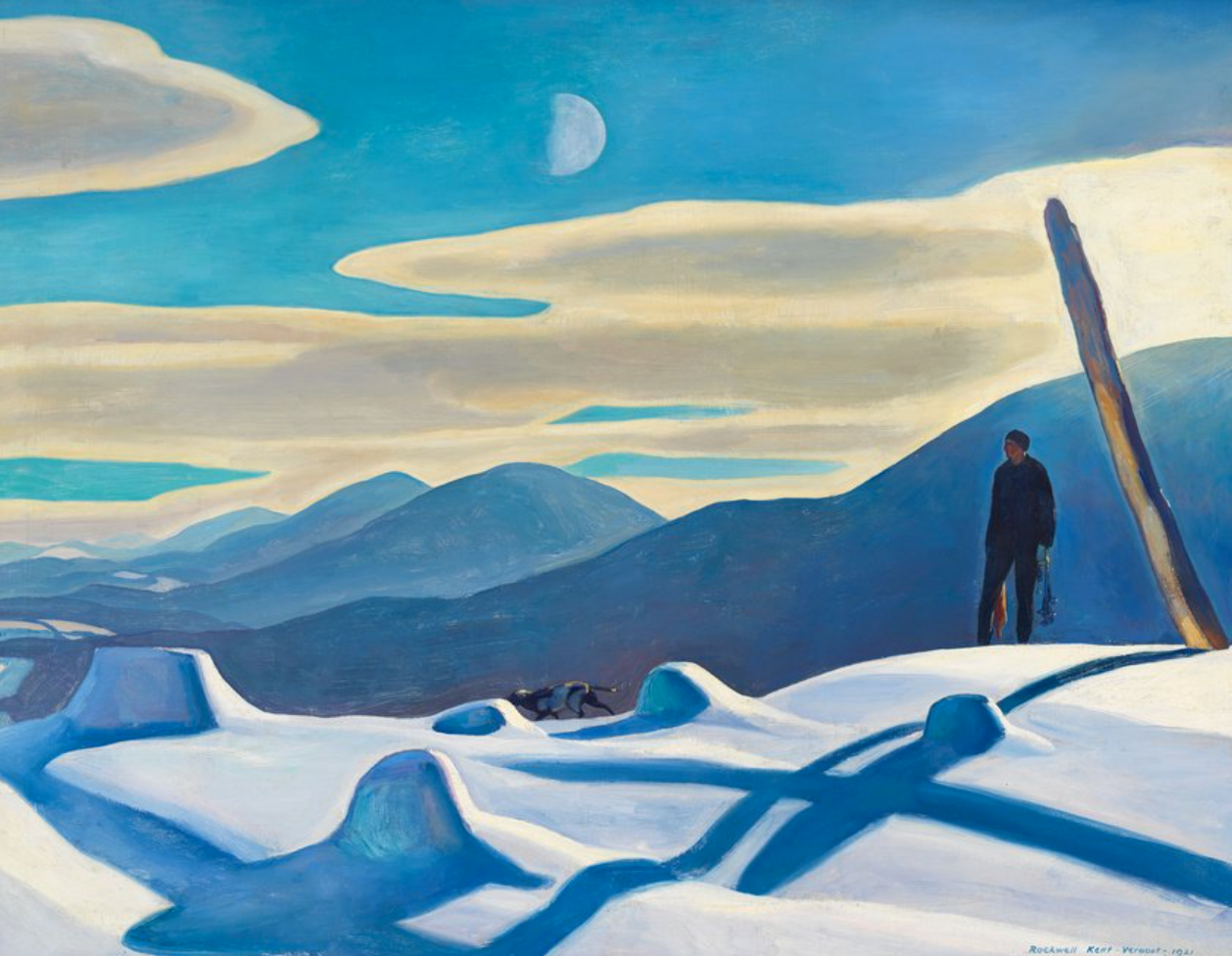Dark Winters
By Ami Melville
Rockwell Kent, The Trapper (1921). Oil on canvas.
I have always been fascinated by dark winters. By this, I mean the ominousness of early nights, the mysteries that lay under snow beds, and the bitter cold of the air. Don’t get me wrong; I adore holiday decorations and fairy lights as much as the next person. However, I particularly enjoy the various ways artists capture the former in their interpretations of winter, specifically how Rockwell Kent epitomizes this “dark winter” in The Trapper (1921).
Kent’s scene is an illustrated narrative that is clearly fictional. The illuminated wooden post – in contrast with the light casting a shadow from the opposing side – is paired with the increasingly dark shadows cast over the mountains behind the titular trapper and his determined canine companion. The trapper holds his bloody catch, which is highlighted by the setting sun. Here, Kent puts the undisturbed white snow in dialogue with the stark gridlines of his characters’ shadows – balancing peace with the morbidity of the trapper’s intent. Kent’s winter is arguably “dark”; while the scene may appear innocent and illustrative, this atmosphere is quickly suspended by its somber details. Personally, I enjoy the unlikely harmony of Kent’s painting as an admirer of dark winters.

